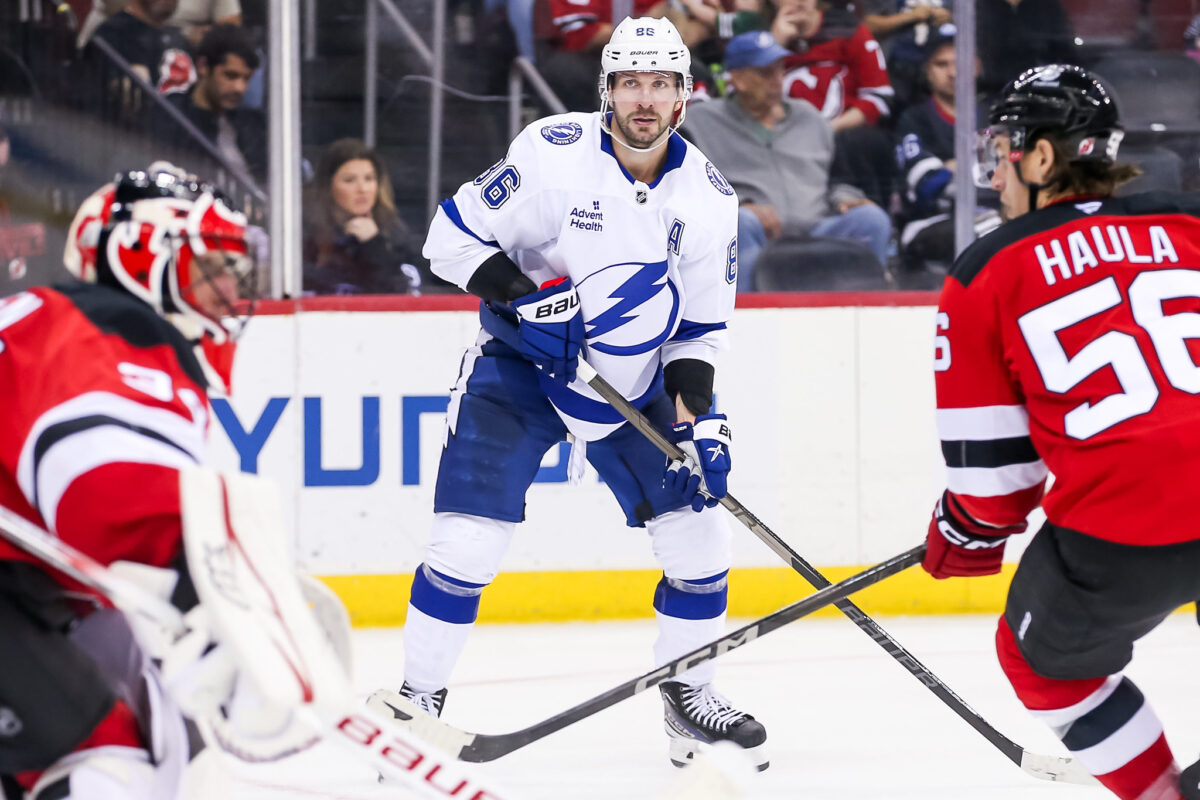After determining hockey analytics have shortcomings, microstats are an excellent tool to bridge the gap between the eye test and advanced statistics. In the last article, I looked at the Tampa Bay Lightning’s zone entries this season. The team has played more passively, as their carry-in percentage decreased from the 2023-24 dataset. However, the sample remains small, and more tracked games will allow for more accurate claims and conclusions.
Related: Tampa Bay Lightning 2024-25 Team Hall of Fame Nominees
Now that I’ve covered zone entries, what about zone exits? In what style does the Lightning transition up the ice? Here’s a look at how the Lightning have done on zone exits this season compared to last.
Microstats Tracking Project Background
I plan to hand-track microstats for the Lightning throughout the 2024-25 season. This dataset will include data points such as passes, zone entries, and additional stats the NHL doesn’t cover. I will continue to share my findings throughout the season, so stay tuned for updates.
I will also be covering the Lightning’s zone exits. When exiting the zone, teams with controlled zone exits (carry-outs) tend to generate more quality offense at the other end of the ice versus teams that clear the puck off the glass. I’ve covered four full games at five-on-five for the Lightning this season (Oct. 11, Oct. 15, Oct. 19, Oct. 22). With that said, who’s been most effective at exiting the zone in 2024-25?
Zone Exits Analysis: Overall Team
When analyzing zone exits, the defensemen have an extra layer of analysis because I track their retrievals (skating back to collect the puck on an opponent’s dump-in). These retrievals ultimately start the breakout and transition process up the ice. In the 2024-25 dataset, the Lightning defense core successfully retrieved 94 pucks while failing to retrieve 16, giving them a retrieval success percentage of 85.45%. This is an improvement compared to last season, when the defensemen had just a 73.11% successful retrieval percentage. We can attribute this increase to improved play from Victor Hedman and Erik Cernak.

Moving onto zone exits, players will either carry the puck out, clear the puck, or fail to exit. Beginning with the blue line, their carry-out percentage will be lower than the forwards since they assist the zone exits. The blue line in Tampa Bay has 13 carry-outs, 50 clears, and 33 failed exits. Based on these numbers, the Lightning’s back end has a 13.54% carry-out percentage. Last season, the defense core had a carry-out percentage of 24.55%. Part of this decline is due to the loss of Calvin de Haan, who ranked second in zone exit carry-outs on the back end in 2023-24.
Similarly, the forwards have also seen a decline in their carry-out percentage. The Lightning forward core has 49 carry-outs, 58 clears, and 29 failed exits in the 2024-25 dataset, good enough for a 36.03% carry-out percentage. On the other hand, the forwards controlled 49.73% of their zone exits last season, an entire 13% better. Nikita Kucherov and Brayden Point haven’t been as efficient on their zone exits this season, which can explain the decrease early on.
Zone Exits Analysis: Individual Spotlight
Players rely on carry-outs, clears, or both to transition up the ice and generate scoring chances. Here’s a look at some of Tampa Bay’s different styles of exiting the zone.
Exits With Possession
These players skate the puck out using their legs, relying less on the puck doing the work when exiting the zone. The top carry-out player on defense this season is Nick Perbix. He leads the blue line in carry-outs. Meanwhile, Point and Mitchell Chaffee are the players up front who exit the zone with possession. Point being at the top of that list is no surprise; he’s one of the NHL’s best in transition. As for Chaffee, he’s grown his game and looks more confident out there this season with the puck on his stick.
Off The Glass and Out
On the other hand, glass and out players will let the puck do the work for them, just firing it out of the zone off the boards for a clear. While this is a much safer approach to exiting the zone, it’s almost like handing the other team possession of the puck. Players like Jake Guentzel, Nick Paul, and Zemgus Girgensons play a low-risk game on the breakout. On the blue line, Ryan McDonagh and J.J. Moser lead in clears. The young defender, Moser, still needs to work on his zone exits, but his rush defense has been stellar to open the season.
Tampa Bay Needs More Carry-Outs With Possession
While all this information is critical, it’s important to note that the sample size remains small. The final dataset will have roughly five times the games tracked already, and a larger sample size will allow us to make more accurate conclusions about players. Nevertheless, controlled zone exits are a weakness of this Tampa Bay team. While the defensemen have been better at retrieving pucks to start the breakout, the team needs to rely on their legs to transition up the ice and generate offense.
